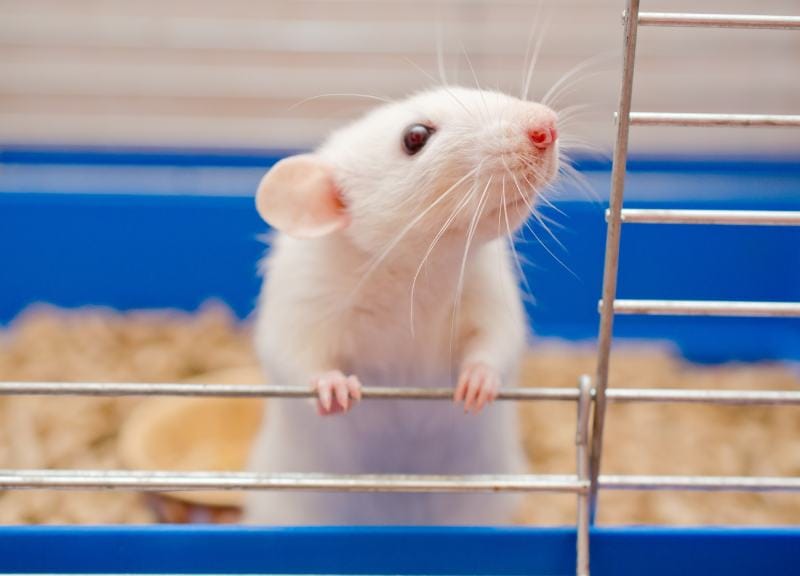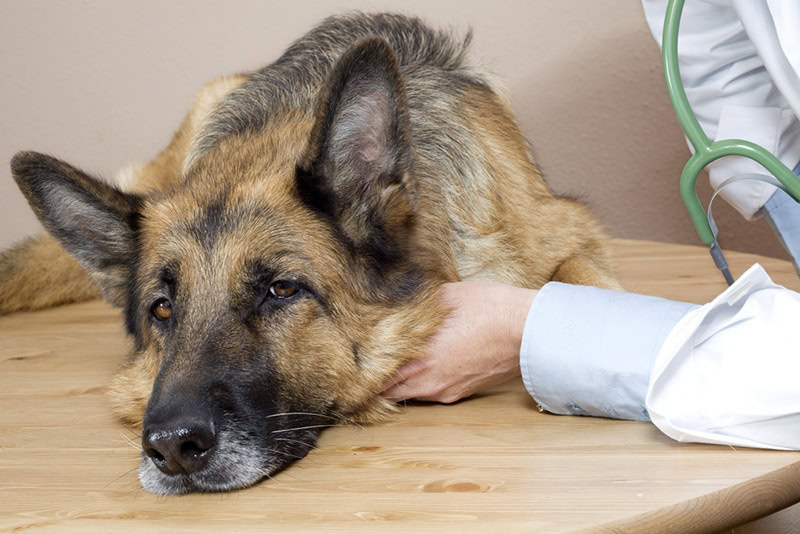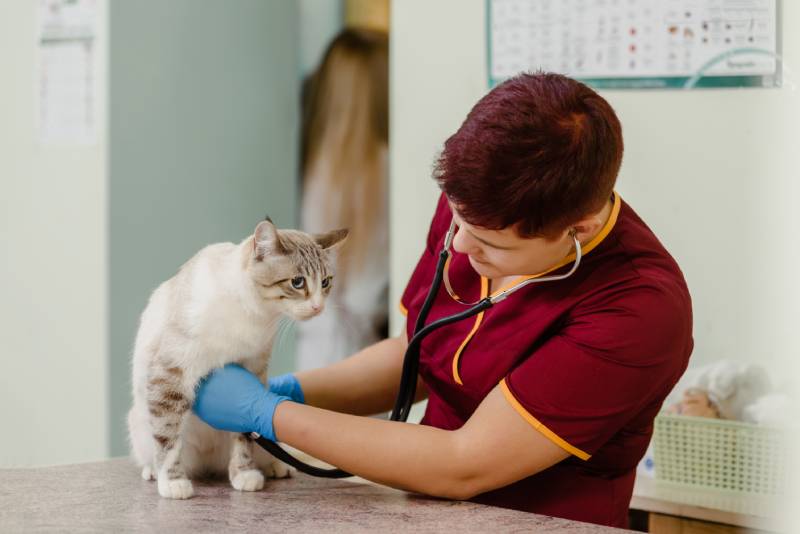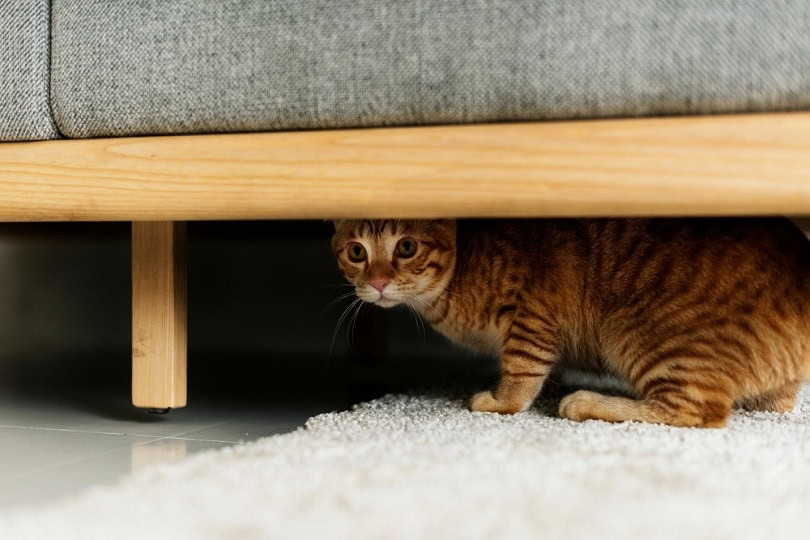VET APPROVED

The information is current and up-to-date in accordance with the latest veterinarian research.
Learn more »Click to Skip Ahead
Rats are intelligent, resilient, and resourceful animals. Despite their reputation as pests, they make wonderful pets for many people. Pet rats are capable of living without both food and water for up to 4 days in most instances, but it is strongly advised to not practice this with your pets.
A pet rat’s limits for withstanding hunger in the absence of food (but availability of water) or thirst in the absence of water (but availability of food) is better than when they’re deprived of both food and water simultaneously.
Pet rats are reliant on their owners for food and water. We must reiterate that the information in this article is for informational purposes only; we don’t recommend depriving your pets of food and water.

How Long Can Rats Go Without Food or Water?
A rat’s tolerance towards hunger or thirst (or a combination of both) depends on several factors, such as their age, weight, and overall health status. As such, studies that have attempted to find the thresholds for such scenarios have found that individual rats perish at varying durations. Therefore, the results of these studies tend to postulate an average duration of survival for the animals involved in the study.
In the case of rats, the following has been experimentally concluded:
| Rat Survival Rates For Hunger & Thirst | |||||
| Offered Food? | Offered Water? | Number of Rats Tested | Average Survival Time (Days) | Minimum Survival Time (Days) | Maximum Survival Time (Days) |
| Yes | No | 16 | 13 | 10 | 16 |
Though the study above did not expose the rats to both hunger and thirst simultaneously, it is postulated that rats would perish extremely quickly if deprived of both these resources. As such, it is generally agreed that the maximum duration an average rat could go without both food and water is around 4 days at best.
As the study above has demonstrated, though, the maximum and minimum survival rates of rats may vary. As such, it is very dangerous to assume that your pet rat would be fine without food and water for 4 days; this is considered an upper limit of their tolerance. Prolonged starvation and thirst may also lead to permanent damage and diseases in a rat’s internal organs (if they were to survive).


Rats: Better Thirst Tolerance Than Hunger Tolerance
Perhaps one of the more intriguing aspects of rats when it comes to tolerating hunger or thirst is that they fare better in the absence of water than in the absence of food. Ordinarily, it would be fair to assume that rats wouldn’t tolerate thirst as well as they’d tolerate hunger, as this is the case with many animal species, including humans. However, rats have amazing intrinsic mechanisms that allow them to tolerate thirst better than one would expect. 1, 2, 3
It has been theorized that rats are able to withstand thirst better as an evolutionary advantage. Rats are prey for many animals, and having to risk a trip to a water source may make them extremely vulnerable to an ambush or attack by a predator. An increased tolerance for thirst would also allow them to live where water is scarce, such as a desert. It would also help them tolerate periods of droughts better, improving their odds of survival as a species.
Rats have also evolved to eat a wide variety of foods in the wild, consuming nearly anything they can find. This ability to readily digest any form of food would explain why they don’t seem to handle hunger well; their high metabolism would warrant them having to eat often. As such, it is theorized that the lack of any form of food would definitely be something an opportunistic omnivore would struggle to compensate for.
Naturally, being deprived of both food and water would be very catastrophic for a rat. As such, they would logically perish the quickest in this scenario.
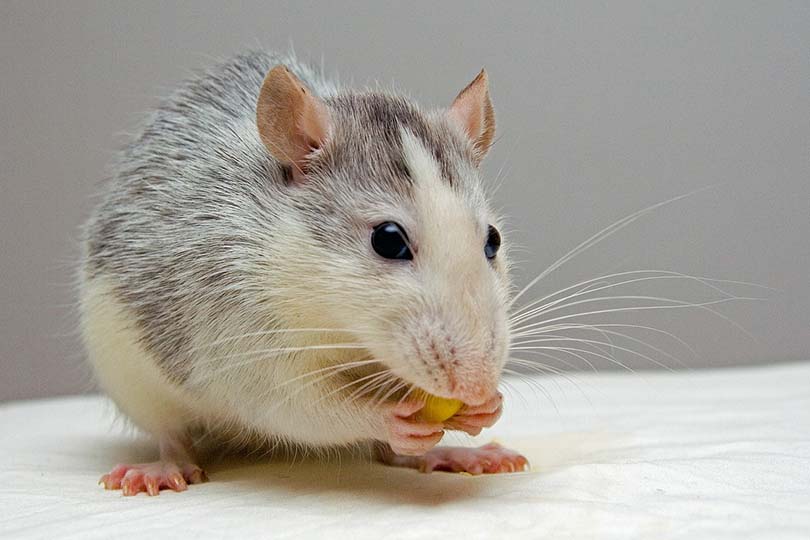

Conclusion
Rats can survive without food for about 4 days, but it’s best for them to be fed two meals every day. Rats are omnivores and can eat all kinds of foods. However, there are still some foods that humans can eat that are harmful to rats. So, it’s often best to feed commercial pellets as their main diet and save fruits, vegetables, and some animal proteins as special treats.
- You may also consider: Can Rats Eat Cat Food? What You Need to Know
Featured Image Credit: Kirill Kurashov, Shutterstock
